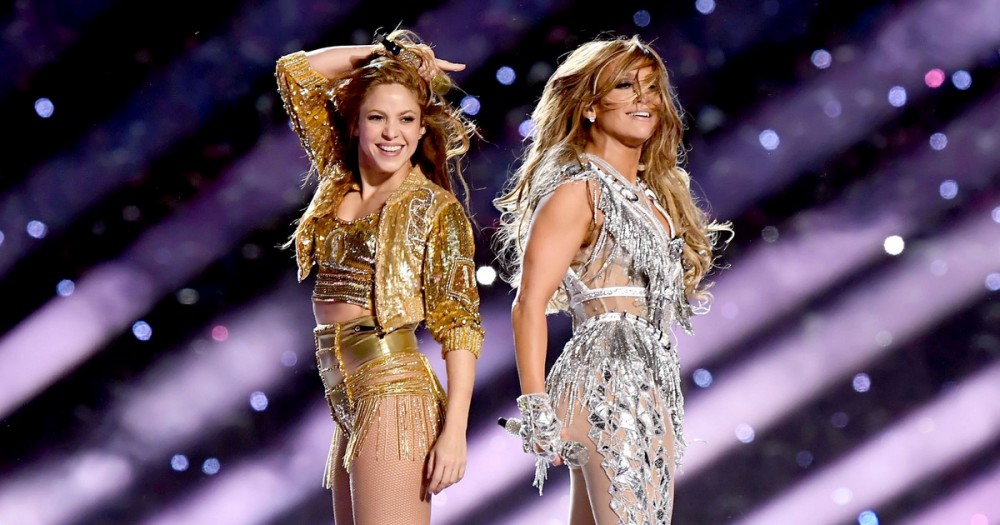Super Bowl halftime performances can be and often are quite bad. In the early years of the show, you were lucky to get a marching band, a college drill team, a few incongruous movie stars, or some other wholesome business. Carol Channing played twice. The youth educational organization Up with People made four appearances between 1976 and 1986, the most of any single entity in the show’s history and enough to catch slander from both The Simpsons and Family Guy. It wasn’t until the 25th ceremony in 1991 that a pop act — the New Kids on the Block, it should be noted — touched the stage. Not long after, Michael Jackson’s 1993 appearance made the Super Bowl one of the most sought after venues for mainstream performers. The NFL slowly leaned into modernity after that, though not without incident.
The show’s always either overextending or thinking too narrowly. On one end, there’s overly ambitious years like 1995, where Patti Labelle and Tony Bennett dueted during routines from Disneyland’s Indiana Jones production for whatever reason; 2001, where NSYNC, Nelly, Mary J Blige, and Britney Spears all crammed into Aerosmith’s “Walk This Way”; and 2004, whose infamous mechanical failure featuring Justin Timberlake and Janet Jackson happened at the end of a mismatched medley of Diddy, Nelly, and Kid Rock songs. There’s also years like the back of the aughts, where hip-hop and R&B were pushed out of the picture to showcase all of the veteran rock acts that should’ve gotten the gig in the ‘70s and ‘80s.
Lady Gaga and Beyoncé proved the show could be a set piece for style, professionalism, and politics in recent years, and then Maroon 5 and Justin Timberlake offered the rejoinder, that bros who leave their politics at the door will always have a seat at the NFL’s table. The league has since looked to change its course on matters of social justice, or at least its optics. A year ago, the NFL unveiled its Inspire Change initiative, a network of programs aimed at closing wealth disparities and improving relations between the police and their respective communities. Inspire Change came in hot, though, with co-partner Jay-Z creating a fuss by working with the NFL as Colin Kaepernick remained blackballed for protesting during the National Anthem. Some saw the gesture as the crossing of a picket line. Others withheld judgment until they saw a bit of what Jay-Z’s music industry acumen could do for the game.
At Super Bowl LIV last night, the precariousness of the NFL’s journey to wokeness took shape strangely. Inspire Change’s official spot showed former San Francisco 49ers wide receiver Anquan Boldin searching for answers after the fatal shooting of his cousin. A Trump 2020 ad used the pardon of Alice Johnson to sell viewers on his (wobbly) record on criminal justice reform; a Bloomberg ad highlighted the murder of football-loving 20-year-old George Kemp Jr. in 2013 and promised Mike would fight the gun lobby. While political factions lunged for slices of the Super Bowl’s hefty viewership, Shakira and Jennifer Lopez tried — and at least for the duration of their 15-minute segment, proceeded — to unite a divided NFL audience.
In 54 years, the Super Bowl halftime show has never featured Latinx artists performing music in Spanish. (In ‘99, as Latin pop music impacted the American charts, Gloria Estefan did “Oye” in English, and in 2000, Christina Aguilera and Enrique Iglesias were brought out to sing Disney’s Epcot Millennium theme song “Celebrate the Future Hand in Hand,” because why not? Bruno Mars played pop and rock songs in English both times he appeared.) History was made two minutes in, when Shakira’s set of hits broke out a bit of the old ¿Dónde Están los Ladrones? closer “Ojos Así,” a song where the native Colombian also highlights her Lebanese roots. In six minutes, Shakira proved her skill as a singer, dancer, guitar player, and drummer (on her birthday, no less), while striking a careful balance between her dueling rockera and pop star personas through the years and pointing to the future by bringing Bad Bunny out for “I Like It.” (J. Balvin dropped by later on. We deserved the two at once.)
Jennifer Lopez dug into her trove of hip-hop/R&B jams and delivered the kind of timeless choreography that keeps her booked for televised performances whether the new singles are popping or not. She repped New York City hip-hop revisiting “Jenny from the Block” and the Murda Inc. remix for “Ain’t It Funny,” then turned the stage into a nightclub for “Waiting for Tonight.” She pushed further with dance than Shakira did, at the cost of a good grip of singing. Her intricate routines nodded to the Super Bowl’s marching band past and suggested that someone’s paying attention to the fearlessly vertical routines in Cheer and large scale productions like Homecoming. The two balanced each other out; what Shakira gave you in versatile musicality, J-Lo gave you in acrobatics, fleet footwork, and hip-hop bluster.
J-Lo’s daughter, Emme Muñiz, delivered the night’s most direct political punch. She sang a piece of “Let’s Get Loud” inside a round metal structure resembling a cage and later belted out the chorus to Bruce Springsteen’s “Born in the USA” as her mom waved a double-sided cape emblazoned with Puerto Rican and United States flags. The message — that Puerto Rico’s struggles are our struggles, and that what happens to the people locked away at the border will define us for generations to come — was loud. A stage full of bright, gifted women, men, and children of color was a more emboldening sight than anything PR teams trying to buy their attention could muster. It was a weird night, but it was a good halftime show.

